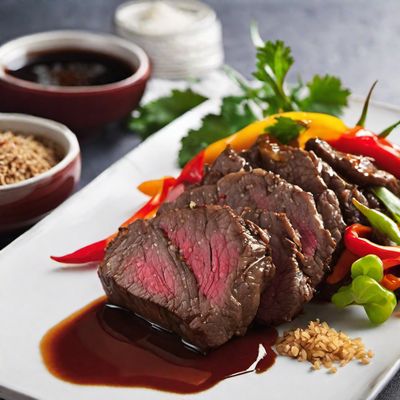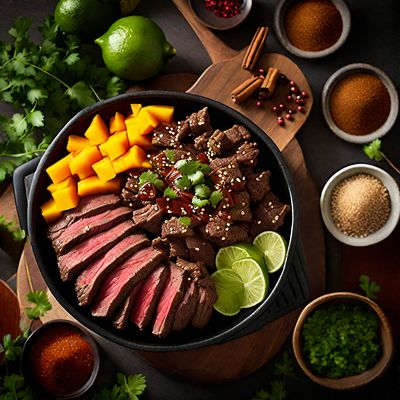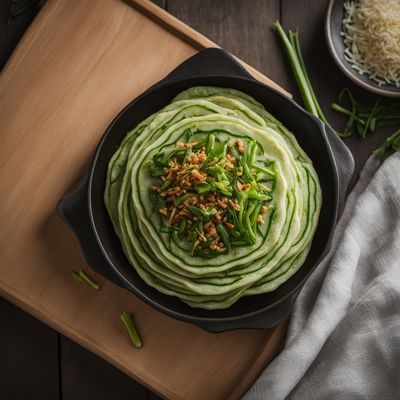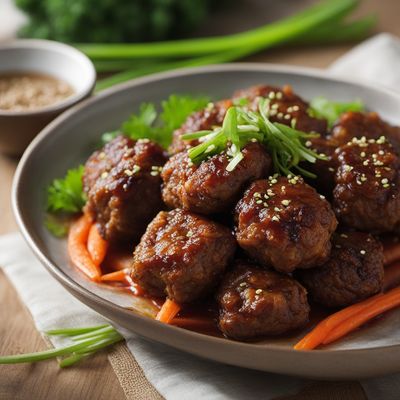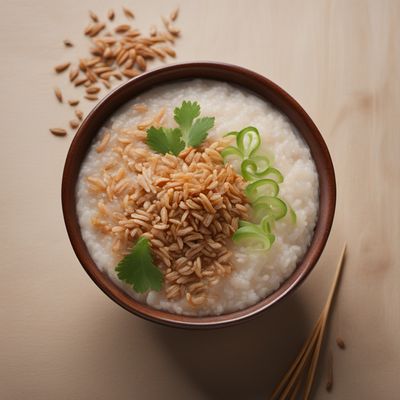
Recipe
Bulgogi - Japanese Style
Savory and Sweet Japanese Bulgogi
4.8 out of 5
Bulgogi is a popular Korean dish that has made its way into Japanese cuisine. This dish is made with thinly sliced beef that is marinated in a sweet and savory sauce, then grilled or pan-fried. The Japanese version of bulgogi is slightly different from the Korean version, as it uses different ingredients and spices.
Metadata
Preparation time
60 minutes (including marinating time)
Cooking time
10-15 minutes
Total time
70-75 minutes
Yields
4 servings
Preparation difficulty
Easy
Suitable for
Low-carb, Gluten-free, Dairy-free, Nut-free, Low-sugar
Allergens
Soy
Not suitable for
Vegetarian, Vegan, Kosher, Halal, Paleo
Ingredients
The Japanese version of bulgogi uses sake and mirin in the marinade, which gives it a slightly sweeter taste than the Korean version. Additionally, the Japanese version uses soy sauce and ginger, which are not typically used in Korean bulgogi. We alse have the original recipe for Bulgogi, so you can check it out.
-
500g (1 lb) thinly sliced beef 500g (1 lb) thinly sliced beef
-
1/2 onion, sliced 1/2 onion, sliced
-
2 green onions, sliced 2 green onions, sliced
-
2 cloves garlic, minced 2 cloves garlic, minced
-
1 tbsp ginger, grated 1 tbsp ginger, grated
-
1/4 cup soy sauce 1/4 cup soy sauce
-
1/4 cup sake 1/4 cup sake
-
1/4 cup mirin 1/4 cup mirin
-
2 tbsp sugar 2 tbsp sugar
-
1 tbsp sesame oil 1 tbsp sesame oil
-
1/4 tsp black pepper 1/4 tsp black pepper
Nutrition
- Calories: 300 kcal / 1255 KJ
- Fat: 15g (5g saturated)
- Carbohydrates: 10g (8g sugars)
- Protein: 30g
- Fiber: 1g
- Salt: 1.5g
Preparation
-
1.In a large bowl, mix together the soy sauce, sake, mirin, sugar, sesame oil, garlic, ginger, and black pepper.
-
2.Add the sliced beef to the marinade and mix well. Cover and refrigerate for at least 1 hour, or overnight.
-
3.Heat a large skillet over medium-high heat. Add the sliced onion and green onion and cook until softened, about 3-4 minutes.
-
4.Add the marinated beef to the skillet and cook until browned and cooked through, about 5-7 minutes.
-
5.Serve hot with rice and steamed vegetables.
Treat your ingredients with care...
- Beef — Use thinly sliced beef, such as sirloin or ribeye, for best results.
- Sake — Use a good quality sake for the best flavor.
- Mirin — If you can't find mirin, you can substitute it with sweet sherry or Chinese rice wine.
- Sesame oil — Use toasted sesame oil for a richer flavor.
- Ginger — Use fresh ginger for the best flavor.
Tips & Tricks
- For a spicier bulgogi, add some red pepper flakes or gochujang to the marinade.
- If you don't have a grill or a large skillet, you can cook the bulgogi in batches in a smaller skillet.
- Serve the bulgogi with lettuce leaves, so that you can wrap the meat and vegetables in the lettuce for a refreshing and healthy meal.
- You can also add some sliced mushrooms or bell peppers to the skillet for extra flavor and nutrition.
- Leftover bulgogi can be stored in the refrigerator for up to 3 days, or frozen for up to 3 months.
Serving advice
Serve the bulgogi hot with steamed rice and your favorite vegetables. Garnish with some sesame seeds and sliced green onions for extra flavor and color.
Presentation advice
Arrange the bulgogi on a large platter, with the rice and vegetables on the side. You can also serve the bulgogi in individual bowls, with the rice and vegetables on top.
More recipes...
More Korean cuisine dishes » Browse all

Guihan
Fish Soup
Guihan is a traditional Chamorro dish that is made with fish, coconut milk, and vegetables. It is a flavorful and hearty dish that is perfect for...

Tutmaji
Sweet potato soup
Tutmaji is a traditional dish from the West African country of Mali. It is a hearty stew made with chicken, vegetables, and rice. The dish is...
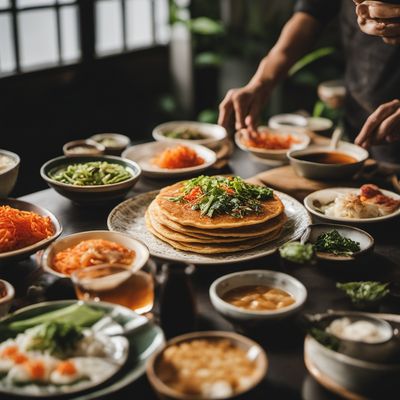
Jeon
Jeon is a Korean pancake that is made with a variety of ingredients, such as seafood, vegetables, or meat. It is a popular dish in Korea and is...
More Japanese cuisine dishes » Browse all
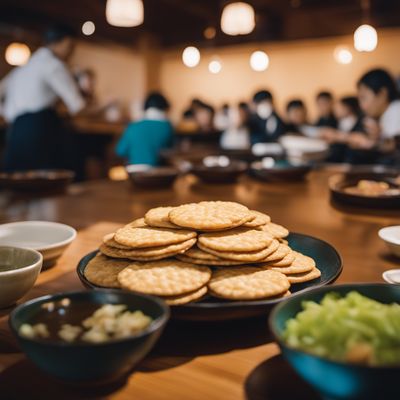
Jibachi senbei
Jibachi senbei is a traditional Japanese dish that is made with rice crackers that are flavored with soy sauce and topped with dried shrimp. It is...

Daifuku
Daifuku is a traditional Japanese sweet that is made with mochi and filled with sweet red bean paste.

Maguro nigiri sushi
Tuna Nigiri
Maguro nigiri sushi is a type of sushi that is made with fresh tuna. The tuna is sliced thinly and placed on top of a small ball of sushi rice....

